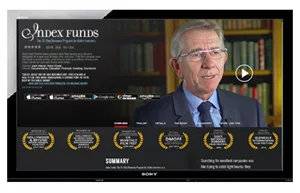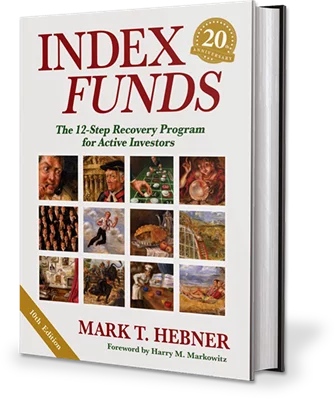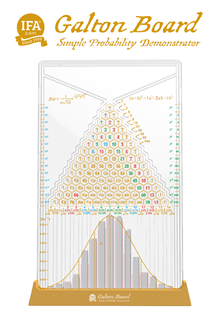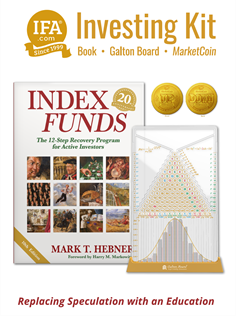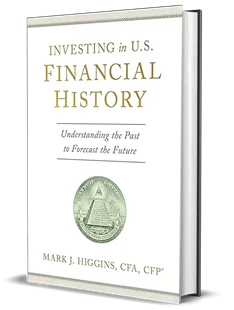It's one of the oldest stories in investing. A fund posts spectacular returns. Money pours in. Investors expect the magic to continue. And then, reality intervenes. Returns revert to the mean, fees eat away at gains, and those who chased performance are left disappointed.
Jeffrey Ptak, Chief Ratings Officer at Morningstar, has offered fresh evidence on this all-too-familiar cycle. In his latest research he highlights how short-term outperformance often attracts heavy inflows, only for those very funds to stumble afterward.
Ptak set out to examine how often funds that experienced spectacular inflows went on to sustain their success. He gathered data on all U.S. mutual funds and ETFs from August 1998 through July 2025 that had at least $500 million in assets and achieved an organic growth rate of more than 200% in a single year. In other words, he focused on funds that had received at least $1 billion in new money over 12 months.
He then looked at these funds' returns before and after their growth spurts. Specifically, Ptak measured each fund's excess return versus an appropriate benchmark, such as the S&P 500 for U.S. stock funds or the Bloomberg U.S. Aggregate Bond Index for taxable bond funds. He compared three-year rolling excess returns prior to the surge in inflows with those in the subsequent three years.
The results were striking. Predictably, these funds tended to have strong outperformance in the periods leading up to their massive inflows. On average, they beat their benchmarks by more than three percentage points annually. But after the money poured in, performance typically faltered. In most cases, relative returns deteriorated: funds either underperformed outright or beat the market by a much smaller margin than before.
Ptak also noted that the reversals have become more frequent and severe in recent decades. While some value-oriented funds in the early 2000s managed to extend their streaks after drawing big inflows, more recent examples — like thematic ETFs focused on robotics, genomics, or clean energy — saw dramatic collapses in performance once they became popular.
As Ptak puts it: "Funds that had outperformed attracted heavy inflows, only to disappoint the investors who chased them."
This simple but painful truth deserves context — both historical and academic — and it goes to the heart of why Index Fund Advisors advocates a radically different approach.
Why winning streaks don't last
The phenomenon that Ptak documents is not new. Academic research stretching back decades shows that active managers who shine for a period almost never sustain it. There are several reasons why:
- Efficient markets. Nobel laureate Eugene Fama demonstrated in the 1960s that security prices reflect all known information. Any apparent edge is usually arbitraged away quickly. Outperformance tends to be fleeting.
- Regression to the mean. Exceptional performance is often the product of luck. As the sample size grows, luck fades and results converge toward average.
- Liquidity constraints. A small fund can trade more freely, but a large one may face challenges that strain liquidity to big trades. Those trades could shift prices against the fund, adding to costs and reducing the chances of sustaining superior performance.
- Costs. Active management entails higher fees and turnover costs. Even a skilled manager must overcome these structural headwinds year after year.
Taken together, these challenges highlight why so many active funds ultimately disappoint their investors. The experience mirrors Mark Hebner's reflections in his book, Index Funds: The 12-Step Recovery Program for Active Investors. In Step 5 of the book, Mark describes how chasing star managers left him worse off than simply holding a diversified portfolio of index funds.
Hebner writes: "With all the time, effort, and money spent trying to find the next hot stock or mutual fund manager, I would have been far better off had I simply bought, held, and rebalanced a portfolio of index funds."
The evidence piles up
Multiple studies reinforce this conclusion. The chart below, produced using data from S&P Dow Jones Indices, shows the percentage of US-domiciled active funds that underperformed their benchmarks over three, five, ten, fifteen and twenty years, up to the end of December 2024. The pattern is clear: the longer the time horizon, the higher the proportion of funds that fall short.
Here are some similar studies:
● Morningstar Active/Passive Barometer The most recent edition of this ongoing scorecard shows that, over the ten-year period ending June 30, 2025, only 21% of active funds both survived and outperformed their passive peers. The figure is even lower for US large-cap funds, where only 8% of active managers succeeded over the same period.
● Persistence studies by S&P Dow Jones Indices reveal that only a tiny fraction of funds that outperform in one period go on to outperform in subsequent periods. Among top-quartile funds within all reported active domestic equity categories as of December 2020, not a single fund remained in the top quartile over the next four years.
● Goyal and Wahal (2008) examined institutional plan sponsors' decisions to hire and fire managers. They found that newly hired "star" managers underperformed the very managers they replaced.
● Kaplan and Kowara (2019) showed that even managers with genuine skill can endure a decade or more of underperformance within a 15-year stretch, making it almost impossible for investors to distinguish luck from ability in real time.
The role of behavior
It's not only that funds fail to persist; it's that investors make things worse for themselves. Morningstar's own Mind the Gap studies reveal that investors tend to buy after strong performance and sell after weak performance. This behavior gap as cited by research like Morningstar's 'Mind the Gap', is estimated to cost the average investor 1–1.7% per year. Dalbar's Quantitative Analysis of Investor Behavior reaches similar conclusions: over decades, the average equity fund investor earns several percentage points less than the market itself, largely due to poor timing decisions.
This is where evidence-based advisors add the most value. Vanguard's Advisor's Alpha framework estimates that behavioral coaching alone can add up to 2% per year in net returns under certain conditions, as outlined in their methodology. By helping clients resist the urge to chase performance or bail out during downturns, fiduciary advisors protect investors from their own worst instincts.
The siren song of performance
Mark Hebner frames the temptation in mythological terms. In Step 1 of Index Funds: The 12-Step Recovery Program for Active Investors, he invokes Homer's Odyssey. Just as Ulysses had himself tied to the mast to resist the deadly Sirens' song, investors need a similar pact — an Investment Policy Statement, agreed in advance with a fiduciary advisor. This "Ulysses Pact" ensures they stay the course, even when markets are turbulent or the latest hot fund beckons.
As Hebner explains, "An advisor can guide clients through the murky or turbulent waters and ensure they don't jump ship in response to the noise. This allows investors to agree up front that they will not act on emotions that can lead to irrational and wealth-destroying decisions."
Hebner illustrates this vividly in his book with the image below, which shows Ulysses tied to the mast while tempted by the Sirens. The metaphor is apt: fund advertising, media hype, and peer chatter are the Sirens of modern investing.

Pain points for wealthy investors
Ptak's research connects directly to the frustrations of high-net-worth investors:
● Performance fatigue. Many have paid premium fees for active funds, only to get index-like (or worse) results. Over time, this breeds cynicism.
● Fee opacity. The advertised management fee is only part of the cost. Trading costs, platform fees, and cash drag are harder to see but still erode returns.
● Complexity. Chasing performance often leaves investors with a jumble of accounts, overlapping funds, and no coherent strategy.
● Trust. When every provider markets themselves as an "advisor," it's hard to know who truly acts in the client's best interest.
These pain points intensify at moments of transition — selling a business, entering retirement, receiving an inheritance, or navigating divorce. It is precisely in such moments that a fiduciary, evidence-based approach adds clarity.
The IFA solution: discipline over drama
IFA's philosophy is grounded in peer-reviewed research rather than salesmanship. It rests on several pillars:
- Markets work. Prices reflect available information. Attempts to outguess them are speculative.
- Risk and return are inseparable. Higher expected returns come only with higher risk. The job is to find the right balance for each investor's capacity and goals.
- Diversification is key. Broad exposure to global markets, tilted toward proven risk factors like size and value, maximizes expected returns for a given risk level.
- Costs matter. By minimizing fees, taxes, and turnover, investors keep more of what markets deliver.
- Discipline wins. A written policy and advisor support prevent performance-chasing and panic selling.
This approach may lack the glamor of a star manager, but it offers something far more valuable: a repeatable, transparent, and evidence-based path to long-term success.
Practical steps for investors
For readers looking to act on Ptak's and Hebner's lessons, here are four takeaways:
- Resist performance-chasing. Understand that today's top funds are no more likely than average to outperform tomorrow.
- Focus on total costs. Demand a one-page "fee map" that shows all-in costs — advisor fees, fund expenses, trading, and platform charges.
- Adopt a written Investment Policy Statement. This is your personal Ulysses Pact, helping you stay committed through good times and bad.
- Work with a fiduciary advisor. Ensure your advisor is legally and ethically bound to put your interests first, and leverages evidence, not sales pitches.
Conclusion: learning the right lesson
Jeffrey Ptak's research shines a light on a painful reality: funds that look like winners often turn into losers once investors pile in. The pattern is familiar, but the lesson is still hard for many to absorb. Mark Hebner's experience, and the decades of academic evidence he draws upon, show why: the hot hand is usually just cold luck in disguise.
Investors don't need more drama. They need discipline. They don't need to gamble on finding the next star manager. They need to embrace the evidence that markets work, costs matter, and behavior is the biggest driver of long-term outcomes. In short, they need to invest — and relax.
References
Ptak, J. (2025). Your fund crushed it. Investors love it. Uh oh. Morningstar Direct.
Goyal, A., & Wahal, S. (2008). The selection and termination of investment management firms by plan sponsors. Journal of Finance, 63(4), 1805–1847.
Kaplan, P. D., & Kowara, M. (2019). Are relative performance measures useless? Journal of Portfolio Management, 45(3), 17–31.
S&P Dow Jones Indices. (2024). SPIVA U.S. Scorecard. S&P Global.
Vanguard. (2022). Advisor's Alpha. Vanguard Research.
Dalbar. (2023). Quantitative Analysis of Investor Behavior. Dalbar Inc.
Morningstar. (2024). Mind the Gap. Morningstar Research.
ROBIN POWELL is the Creative Director at Index Fund Advisors (IFA). He is also a financial journalist and the Editor of The Evidence-Based Investor. This article reflects IFA's investment philosophy and is intended for informational purposes only.
Disclosure:
The content of this article references historical studies, market research, and independent data from third-party sources, including Morningstar, S&P Dow Jones Indices, and academic papers. All referenced studies and analyses are constrained by their respective methodologies, time periods, and datasets, which may not account for all market conditions, trends, or variables. As such, conclusions drawn from these studies should be interpreted within the specific context of their parameters.
Statements about fund performance, investor behavior, and market dynamics rely on aggregate data and observed historical patterns. These results may not represent future outcomes or the performance of individual funds or investors. The article does not guarantee that the trends outlined, such as underperformance following inflows or regression to the mean, will universally or consistently apply. Additionally, past performance is not indicative of future results.
This article is for informational purposes only and does not constitute personalized investment advice. All investments carry risks, including the potential loss of principal. We recommend consulting a fiduciary or qualified financial advisor before making any investment decisions to ensure alignment with personal financial goals, risk tolerance, and circumstances.
For additional information about IFA, including detailed information about services, compensation, and potential conflicts of interest, please review our brochure available both at www.adviserinfo.sec.gov and www.ifa.com.
Please consult with a qualified financial professional for personalized advice prior to making investment decisions.



